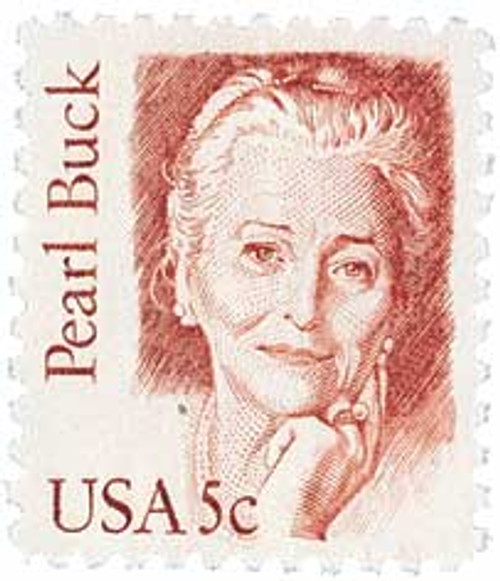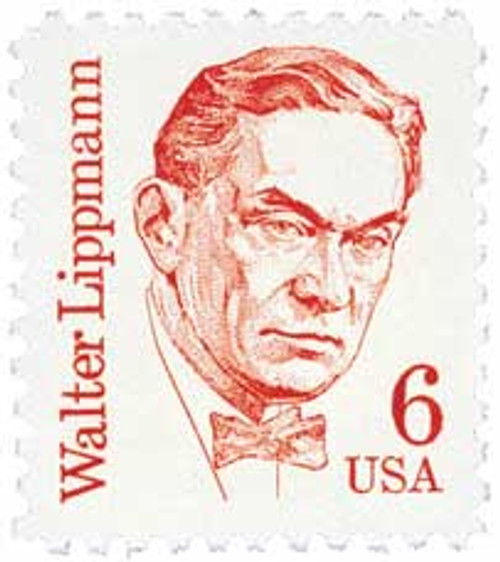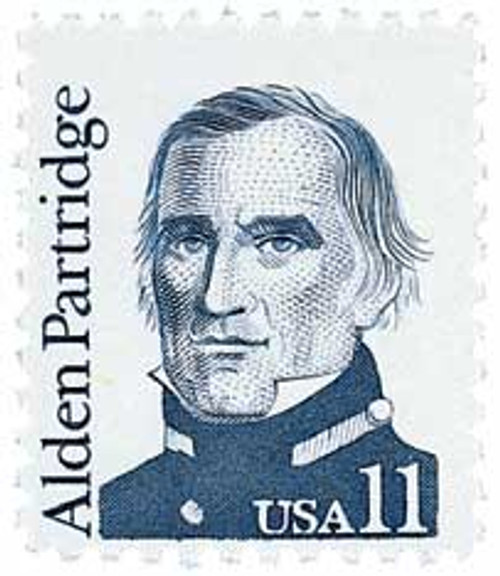
# 2940 FDC - 1995 55c Great Americans: Alice Hamilton, M.D.
US #2940
1995 Alice Hamilton, MD
- Part of the Great American Series
- Honors social reformer Alice Hamilton
Category of Stamp: Definitive
Set: Great Americans
Value: 55¢, First Class 2-ounce rate
First Day of Issue: July 11, 1995
First Day City: Boston, Massachusetts
Quantity Issued: 200,000,000
Printed by: Banknote Corporation of America
Printing Method/Format: Engraved. Panes of 100 (10 across, 10 down), from printing plate of 400 subjects (20 across, 20 down)
Perforations: 11.2 X 11.1
Reason the stamp was issued: The Alice Hamilton stamp was issued to fulfill the First-Class rate for mail weighing two ounces. It commemorates the physician, social reformer, and educator.
About the stamp design: Christ Calle drew the pencil portrait of Alice Hamilton. He is the talent behind many US stamps. The image is based on a photo of Hamilton taken when she was an assistant professor of industrial medicine at Harvard University.
First Day City: The First Day of Issue ceremony took place at the Harvard School of Public Health, where Hamilton had been a professor.
About the Great Americans series:
The Great Americans Series was created to replace the Americana Series. The new series would be characterized by a standard definitive size, simple design, and monochromatic colors.
This simple design included a portrait, “USA,” the denomination, the person’s name, and in some cases, their occupation or reason for recognition. The first stamp in the new series was issued on December 27, 1980. It honored Sequoyah and fulfilled the new international postcard rate that would go into effect in January 1981.
The Great Americans Series would honor a wider range of people than the previous Prominent Americans and Liberty Series. While those series mainly honored presidents and politicians, the Great Americans Series featured people from many fields and ethnicities. They were individuals who were leaders in education, the military, literature, the arts, and human and civil rights. Plus, while the previous series only honored a few women, the Great Americans featured 15 women. This was also the first definitive series to honor Native Americans, with five stamps.
The Bureau of Engraving and Printing (BEP) produced most of the stamps, but private firms printed some. Several stamps saw multiple printings. The result was many different varieties, with tagging being the key to understanding them. Though there were also differences in perforations, gum, paper, and ink color.
The final stamp in the series was issued on July 17, 1999, honoring Justin S. Morrill. Spanning 20 years, the Great Americans was the longest-running US definitive series. It was also the largest series of face-different stamps, with a total of 63.
History the stamp represents:
Doctor and research scientist Alice Hamilton was born on February 27, 1869, in Manhattan, New York. She was a pioneer in the fields of occupational health and industrial toxicology. Her extensive research and thorough reports helped improve working conditions across America.
Hamilton spent much of her childhood with family in Fort Wayne, Indiana. She and her siblings were homeschooled, though she did attend finishing school in Connecticut. Hamilton came from a wealthy family, but she wanted to be of service to others. At one time she wanted to be a medical missionary, but was unsure she could do it, so she opted to become a doctor. She studied at Fort Wayne College of Medicine for a year before entering the University of Michigan Medical School in 1892.
Hamilton did her internships in Minneapolis and Boston. During this time, she decided that she didn’t want to open a medical practice and returned to school to study bacteriology. Hamilton also became interested in public health. She then went to Germany in 1895 to study bacteriology and pathology for a year. After completing her postgraduate studies at Johns Hopkins, Hamilton became a professor of pathology at the Woman’s Medical School of Northwestern University.
Shortly after her arrival in Chicago, Hamilton realized a long-time goal of becoming a member and resident of Jane Addams’s Hull House. After working days at the medical school, she spent her evenings working at the Hull House. While there, she became Addams’s personal physician, taught English and art, oversaw fencing and athletic programs, and ran a baby clinic. Hamilton eventually left Chicago but returned to Hull House for several months every year until Addams died in 1935.
Hamilton’s work at Hull House introduced her to many people who worked dangerous jobs that negatively affected their health. This inspired her to start studying occupational illnesses and injuries so that she might help improve their working conditions and overall health. In 1910, she was made the medical investigator of the Illinois Commission on Occupational Diseases. In that role she investigated industrial poisons such as lead. Her report helped inspire the first workers’ compensation laws in Illinois in 1911. These and similar laws pushed employers to take proper precautions to protect their employees.
Hamilton was eventually the nation’s leading authority on lead poisoning. She also spent a decade looking into other toxic disorders caused by a variety of substances including carbon monoxide, mercury, radium, and more. Hamilton is considered a pioneer in the fields of occupational epidemiology and industrial hygiene. Her reports helped introduce significant health reforms.
In 1919, Hamilton became the first woman appointed to the Harvard University faculty when she became an assistant professor at the new Department of Industrial Medicine (later the School of Public Health). She remained there until her retirement in 1935. During that period, she continued her research, published several influential reports for the Department of Labor, and wrote the first US textbook on industrial poisons.
After leaving Harvard, Hamilton worked as a medical consultant for the US Division of Labor Standards and president of the National Consumers League. Throughout her life she had also been an activist for social reform, peace, and women’s rights.
US #2940
1995 Alice Hamilton, MD
- Part of the Great American Series
- Honors social reformer Alice Hamilton
Category of Stamp: Definitive
Set: Great Americans
Value: 55¢, First Class 2-ounce rate
First Day of Issue: July 11, 1995
First Day City: Boston, Massachusetts
Quantity Issued: 200,000,000
Printed by: Banknote Corporation of America
Printing Method/Format: Engraved. Panes of 100 (10 across, 10 down), from printing plate of 400 subjects (20 across, 20 down)
Perforations: 11.2 X 11.1
Reason the stamp was issued: The Alice Hamilton stamp was issued to fulfill the First-Class rate for mail weighing two ounces. It commemorates the physician, social reformer, and educator.
About the stamp design: Christ Calle drew the pencil portrait of Alice Hamilton. He is the talent behind many US stamps. The image is based on a photo of Hamilton taken when she was an assistant professor of industrial medicine at Harvard University.
First Day City: The First Day of Issue ceremony took place at the Harvard School of Public Health, where Hamilton had been a professor.
About the Great Americans series:
The Great Americans Series was created to replace the Americana Series. The new series would be characterized by a standard definitive size, simple design, and monochromatic colors.
This simple design included a portrait, “USA,” the denomination, the person’s name, and in some cases, their occupation or reason for recognition. The first stamp in the new series was issued on December 27, 1980. It honored Sequoyah and fulfilled the new international postcard rate that would go into effect in January 1981.
The Great Americans Series would honor a wider range of people than the previous Prominent Americans and Liberty Series. While those series mainly honored presidents and politicians, the Great Americans Series featured people from many fields and ethnicities. They were individuals who were leaders in education, the military, literature, the arts, and human and civil rights. Plus, while the previous series only honored a few women, the Great Americans featured 15 women. This was also the first definitive series to honor Native Americans, with five stamps.
The Bureau of Engraving and Printing (BEP) produced most of the stamps, but private firms printed some. Several stamps saw multiple printings. The result was many different varieties, with tagging being the key to understanding them. Though there were also differences in perforations, gum, paper, and ink color.
The final stamp in the series was issued on July 17, 1999, honoring Justin S. Morrill. Spanning 20 years, the Great Americans was the longest-running US definitive series. It was also the largest series of face-different stamps, with a total of 63.
History the stamp represents:
Doctor and research scientist Alice Hamilton was born on February 27, 1869, in Manhattan, New York. She was a pioneer in the fields of occupational health and industrial toxicology. Her extensive research and thorough reports helped improve working conditions across America.
Hamilton spent much of her childhood with family in Fort Wayne, Indiana. She and her siblings were homeschooled, though she did attend finishing school in Connecticut. Hamilton came from a wealthy family, but she wanted to be of service to others. At one time she wanted to be a medical missionary, but was unsure she could do it, so she opted to become a doctor. She studied at Fort Wayne College of Medicine for a year before entering the University of Michigan Medical School in 1892.
Hamilton did her internships in Minneapolis and Boston. During this time, she decided that she didn’t want to open a medical practice and returned to school to study bacteriology. Hamilton also became interested in public health. She then went to Germany in 1895 to study bacteriology and pathology for a year. After completing her postgraduate studies at Johns Hopkins, Hamilton became a professor of pathology at the Woman’s Medical School of Northwestern University.
Shortly after her arrival in Chicago, Hamilton realized a long-time goal of becoming a member and resident of Jane Addams’s Hull House. After working days at the medical school, she spent her evenings working at the Hull House. While there, she became Addams’s personal physician, taught English and art, oversaw fencing and athletic programs, and ran a baby clinic. Hamilton eventually left Chicago but returned to Hull House for several months every year until Addams died in 1935.
Hamilton’s work at Hull House introduced her to many people who worked dangerous jobs that negatively affected their health. This inspired her to start studying occupational illnesses and injuries so that she might help improve their working conditions and overall health. In 1910, she was made the medical investigator of the Illinois Commission on Occupational Diseases. In that role she investigated industrial poisons such as lead. Her report helped inspire the first workers’ compensation laws in Illinois in 1911. These and similar laws pushed employers to take proper precautions to protect their employees.
Hamilton was eventually the nation’s leading authority on lead poisoning. She also spent a decade looking into other toxic disorders caused by a variety of substances including carbon monoxide, mercury, radium, and more. Hamilton is considered a pioneer in the fields of occupational epidemiology and industrial hygiene. Her reports helped introduce significant health reforms.
In 1919, Hamilton became the first woman appointed to the Harvard University faculty when she became an assistant professor at the new Department of Industrial Medicine (later the School of Public Health). She remained there until her retirement in 1935. During that period, she continued her research, published several influential reports for the Department of Labor, and wrote the first US textbook on industrial poisons.
After leaving Harvard, Hamilton worked as a medical consultant for the US Division of Labor Standards and president of the National Consumers League. Throughout her life she had also been an activist for social reform, peace, and women’s rights.

















